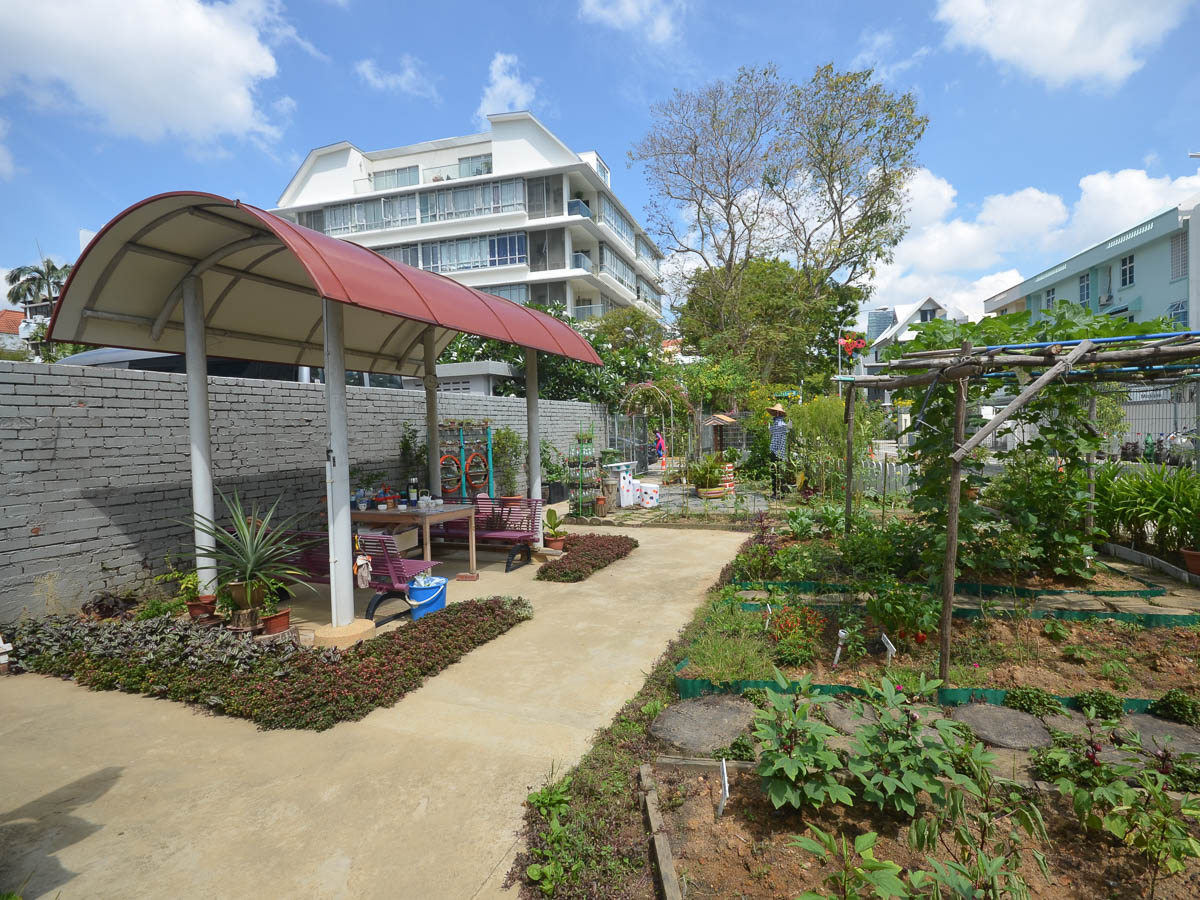Shelters
.jpg)
Shelters are important in community gardens to provide protection from rain and sun. They can come in a variety of designs and materials and can be customised to serve different functions, such as community bonding spaces, storage spaces, propagation stations or spaces for your compost. Shelters that are above 1.5m in height will need approval from the landowner and relevant authorities. Seek assistance from your Grassroots Organisation or Managing Agent before erecting such shelters in your garden.
Types of Shelters

Pavilions are simple shelters with a solid roof and no walls. These are ideal for providing seating and storage options as gardeners will naturally gather under these shelters. Pavilions should be installed by contractors to ensure safety and resilience against the elements.
.jpg)
Pergolas are usually made of wood or metal, and have a slatted roof for vines to grow over. These shelters will not protect you from rain, but are ideal for providing dappled sunlight conditions for a rest area or to grow plants that need more shade.

Propagation stations are usually small shelters built to protect vulnerable seedlings and cuttings from direct sun and rain. These stations can be standalone or incorporated as part of a larger structure. Propagation stations can have a solid roof, or a simple netting with fine mesh.
.jpg)
Rain shelters are small shelters with solid roofs made of clear plastic that completely protect plants from rain. Plants like Tomato and Chilli often benefit from growing under such shelters as their fruits are vulnerable to rain damage.

